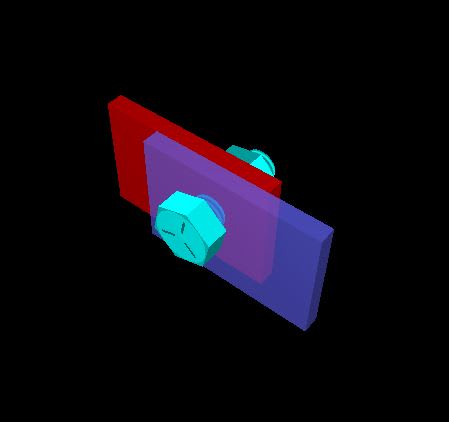Refer below picture.
This is a connection for a bracing member (tension-only tie rod). The applicable design code (AS5100) states that bolted connections shall have at least 2 bolts, except in case of light bracing members (which this certainly is covered by).
A single M20 bolt satisfies the design loading with about 80% utilisation assuming pure shear in the bolt. The plates are 75x10 mm thick and loaded in pure tension.
Are there any additional bending/prying effects that need to be considered here? No doubt the plates will bend and rotate slightly under tension and the bolt will experience some combined shear and tension. But I'm not sure if this is significant or worth worrying about.

This is a connection for a bracing member (tension-only tie rod). The applicable design code (AS5100) states that bolted connections shall have at least 2 bolts, except in case of light bracing members (which this certainly is covered by).
A single M20 bolt satisfies the design loading with about 80% utilisation assuming pure shear in the bolt. The plates are 75x10 mm thick and loaded in pure tension.
Are there any additional bending/prying effects that need to be considered here? No doubt the plates will bend and rotate slightly under tension and the bolt will experience some combined shear and tension. But I'm not sure if this is significant or worth worrying about.

